The Fujitsu MCM3130AP is an internal 3.5″ magneto-optical disc drive, produced from 2002-2003. As Fujitsu’s own documentation aptly states, these “take Fujitsu’s magneto-optical
(MO) technology to new levels with its 640MB and 1.3GB drives”.
While in both the USA & Europe magneto-optical media never really took off as well as it did elsewhere, this unit originally came in a machine imported from Japan. Perhaps it’s not surprising to know that MO media a whole did supremely well in the East.

As with many MO drives, some may be fooled into thinking they’re floppy drives from an initial inspection. It couldn’t be further from the truth!

The main label adheres to Fujitsu’s own standards, being in a format present on many other devices manufactured across their various divisions.
As seen above, the drive featured in this post was manufactured in December 2002. The MCM3130AP supports formatted discs to a maximum capacity of 1.3GB, with a full breakdown of the various capacity levels supported found in the datasheet linked at the bottom of this post.
These drives were solely produced in Thailand.
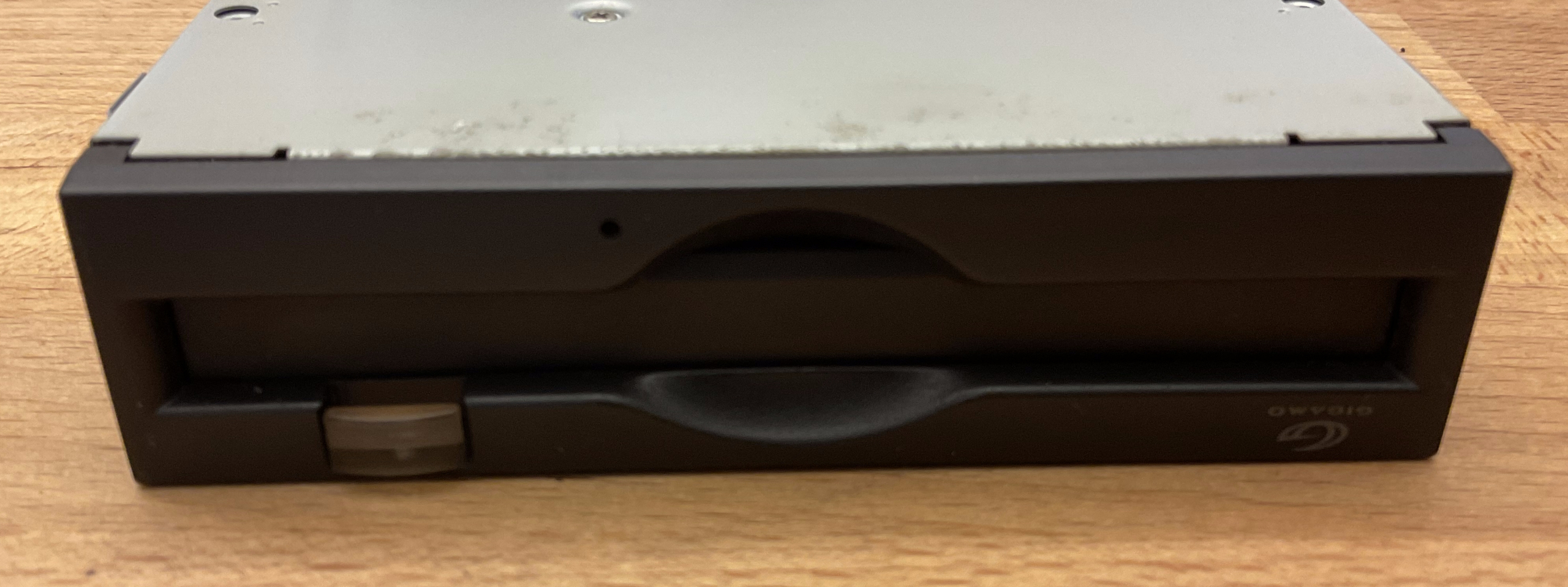
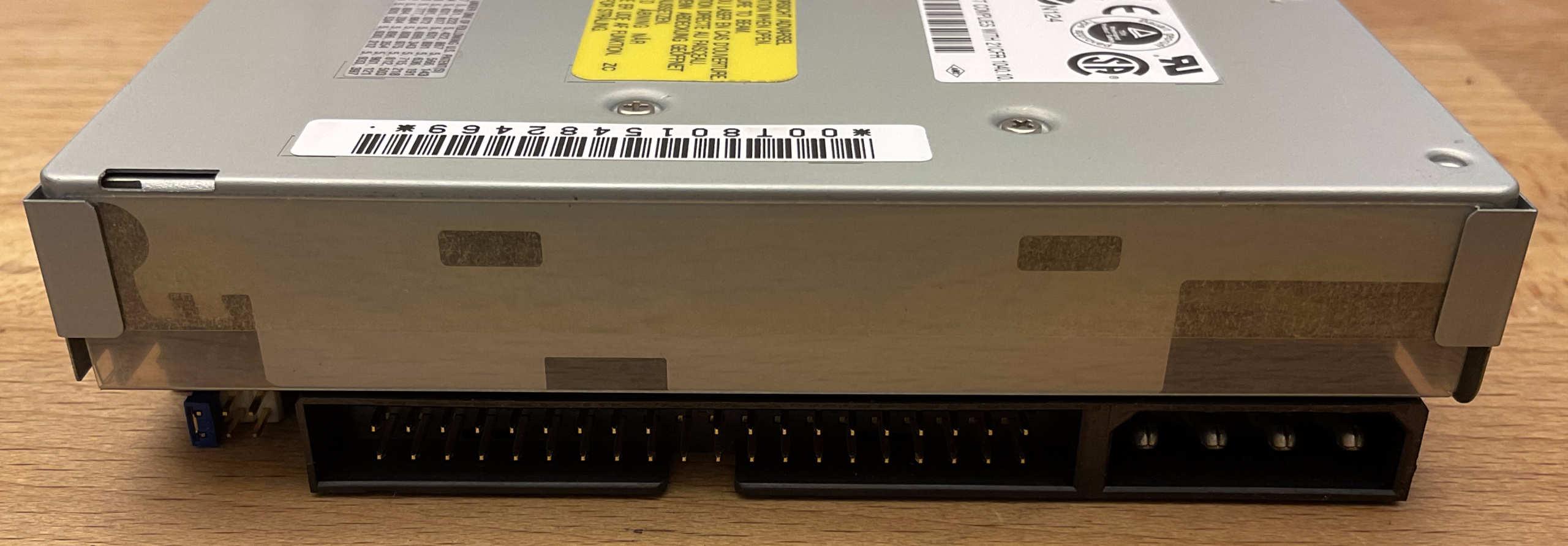
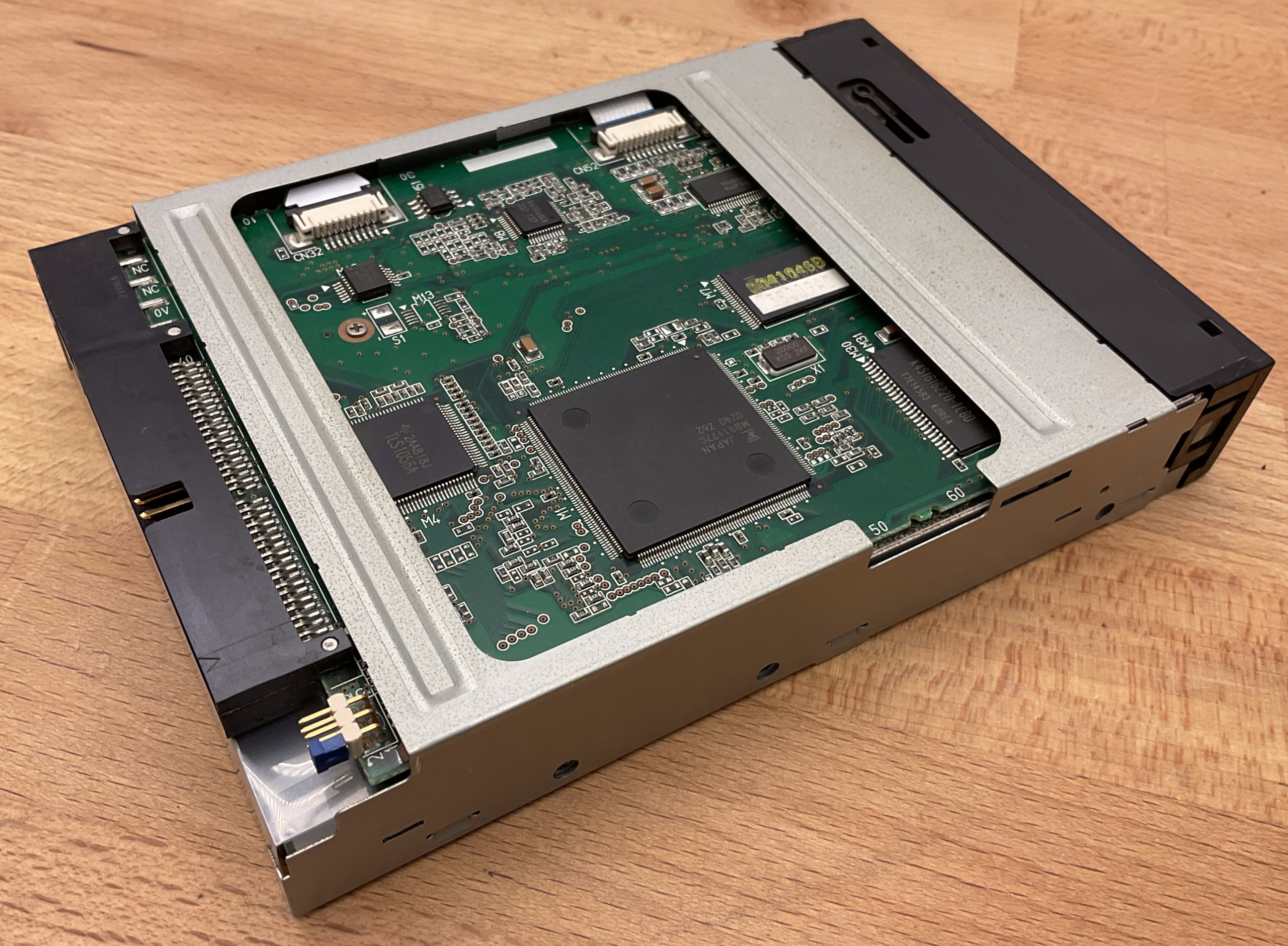
From the angle above, the general comparison with how a 3.5″ internal floppy drive looks is even easier to identify. Being an IDE device, these units have master/slave jumpers on the rear. Fortunately, where many MO drives from the period were simply connected via SCSI, this unit has a wider system support position.

The lid is removed with sime minor force to the sides, as no screws hold on the top assembly. It’s similar to that of a floppy drive in initial disassembly, looks aside.

Taking a look at the rear, the laser driver assembly is attached. There’s a small sheet of insulation material present, which requires removal before looking inwards.

The chip to the centre (Toshiba TA6015F-A5) is the laser power controller, a specific chip only found on MO drives. Laser power can be adjusted using the two potentiometers to the south.
Like any other optical drive, decreasing input resistance increases laser power, which allows a weak laser to function for a while longer. Of course, in terms of drive lifespan, this isn’t recommended.
The white socket in the centre connects directly to the main logic PCB, which is held in with a few screws.

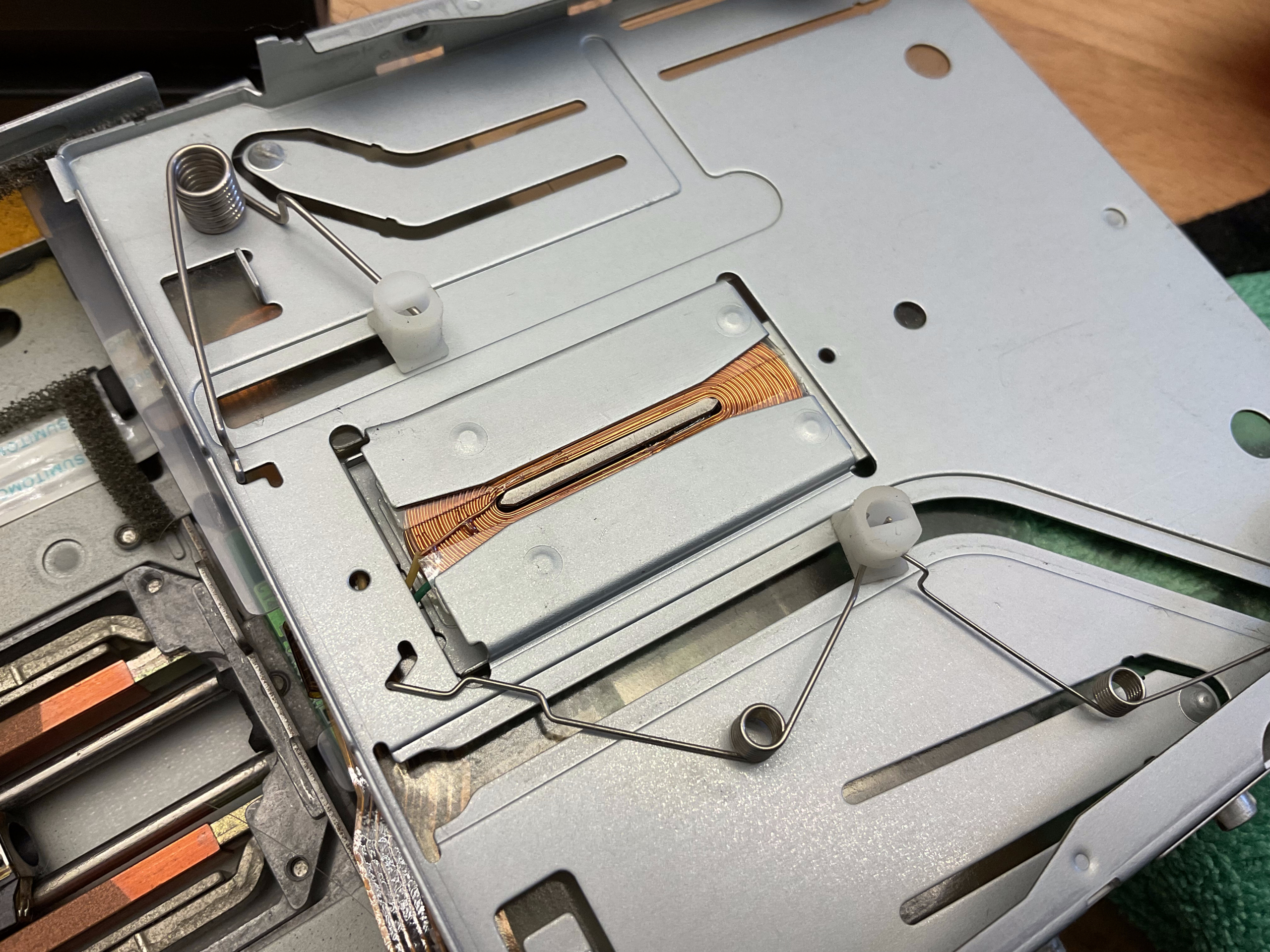
As with the top assembly of the drive, the drive retention support also lifts up with some careful side prying.
This drive is constructed in a way which makes maintenance very simple. However, if you plan to dive deep for curiosity or for problem analysis, it gets quite complex from here.

With the top removed, the laser & motor are both visible. Going further isn’t something this post will tackle!

The motor itself has no rubber on it, which isn’t an essential requirement for MO media, given the method of disc insertion. The laser isn’t clearly market with a part-number, but this may be indicated on the rear side.
To put it blunty, it’s unlikely a compatible part is available for purchase over 20 years later anyway.
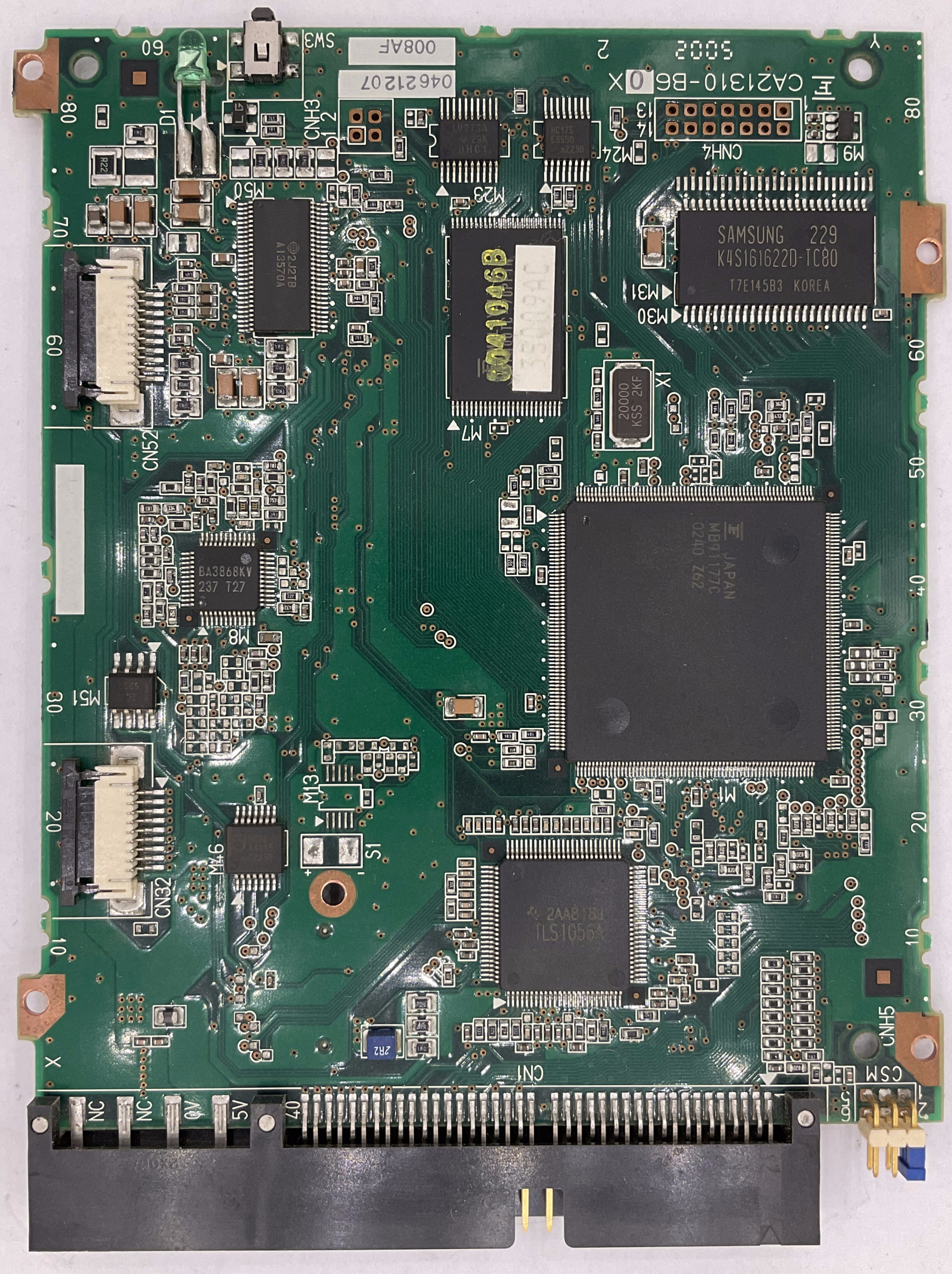
The heart of this drive is clearly the custom Fujitsu MB91177C IC, which is certainly an unwieldly package.
At position M31, Samsung’s 16MB of DRAM (IC: K4S161622D) sits alone. All other IC’s are fairly custom, so their exact functions can’t be concretely stated, but it’s likely that the Texas Instruments IC at position M4 has some role in interface conversion.
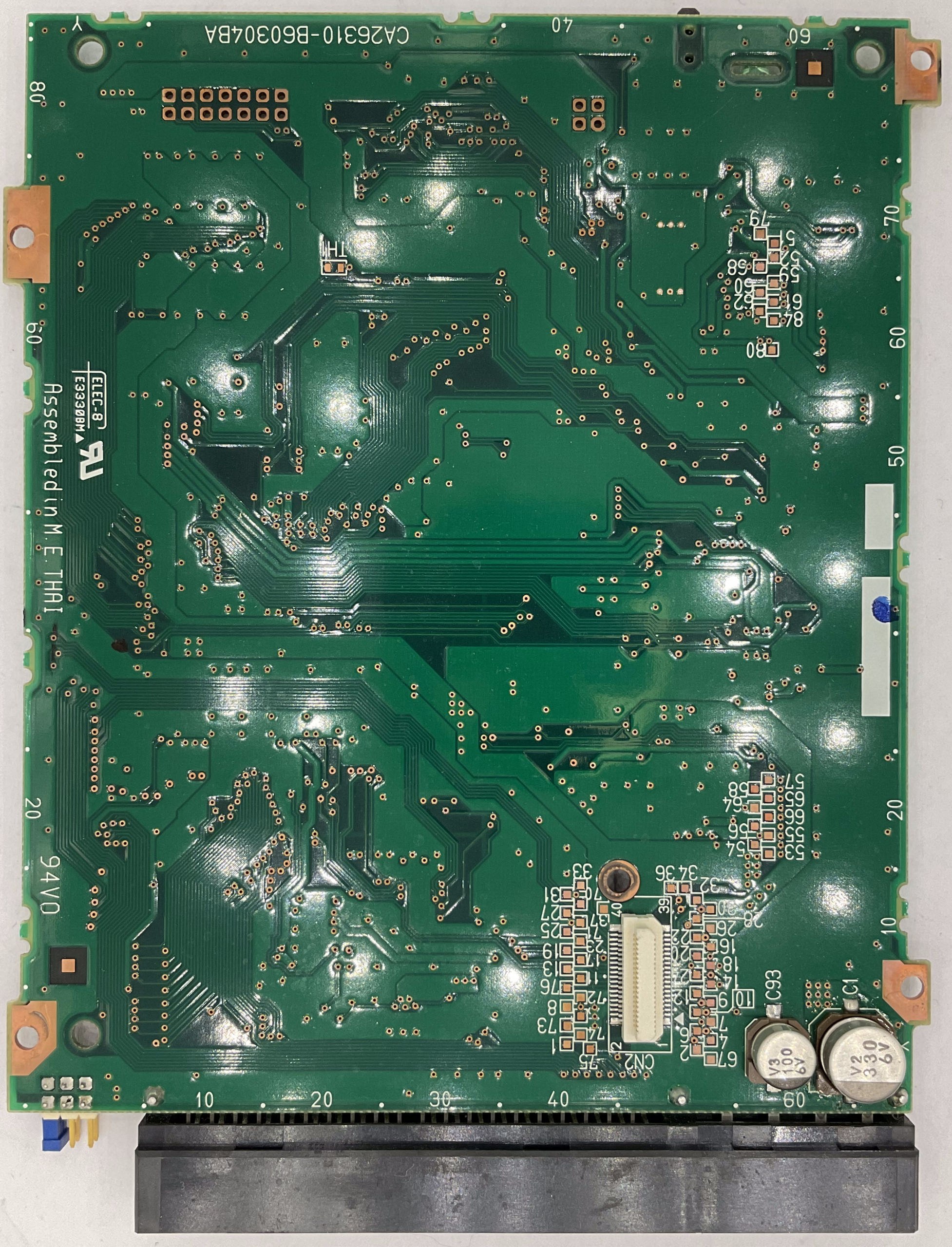
The rear of the PCB is expectedly blank, although the surface-mount capacitors are worth keeping an eye on in years/decades to come.
All-in-all, the MCM3130AP isn’t a groundbreaking introduction to Fujitsu’s MO development; the company had been in the industry for several years by 2002.
It’s a shame MO media didn’t have such an impact over here as it did elsewhere. Think of the fun possibilities!